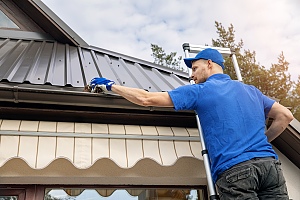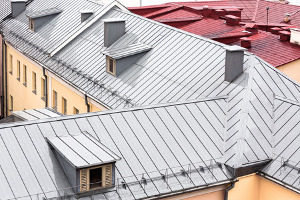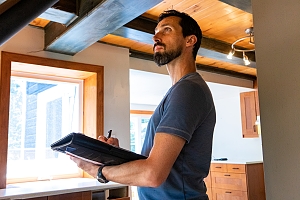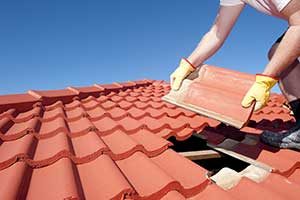The Ultimate Guide to Roofing: Everything You Need to Know

Are you looking to start a roofing project but unsure where to begin? Look no further! In this comprehensive guide, we cover everything about building covers. Whether you’re a homeowner or a contractor, we have you covered.
From different types of covering materials to the pros and cons of each, we help you make an informed decision that suits your needs and budget. Our expert tips and advice assist you in navigating through the daunting world of building covers.
Additionally, we delve into the importance of regular cover maintenance, common covering problems, and how to identify signs of damage. We believe that prevention is crucial, so we provide practical tips on extending your cover’s lifespan.
Join us on this journey as we demystify building covers and empower you with the knowledge you need to make educated decisions about your structure. Let’s ensure your cover stands strong and protects you for years to come!
Different Types of Materials
When it comes to roofing, the first decision is choosing the right material. Several options are available, each with unique features and benefits. Let’s explore some popular roofing materials:
Asphalt Shingles
Asphalt shingles are the most commonly used roofing material due to affordability and versatility. They come in a wide range of colors and styles, making them suitable for various architectural designs. Asphalt shingles are easy to install and require low maintenance, making them popular for homeowners.
Metal Roofing
Metal roofing has gained popularity due to its durability and energy efficiency. It can withstand extreme weather conditions, including heavy rain, snow, and strong winds. Metal roofs are fire-resistant and have a long lifespan, making them a cost-effective option in the long run.
Clay or Concrete Tiles
Clay or concrete tiles are known for their timeless beauty and durability. They are commonly used in Mediterranean or Spanish-style architecture. These tiles are resistant to fire, rot, and insects. However, they are heavier and more expensive compared to other roofing materials, requiring additional structural support.
Rubber Roofs
Rubber roofs, often referred to as EPDM roofs, offer several benefits and are commonly used in residential and commercial buildings.
Pros and Cons of Each Material

Each roofing material has advantages and disadvantages. It’s essential to understand these aspects to make an informed decision. Let’s take a closer look at the pros and cons of the roofing materials mentioned above:
Asphalt Shingles
Pros:
- Affordable and readily available
- Easy to install and repair
- Wide range of colors and styles to choose from
Cons:
- Less durable compared to other materials
- Prone to damage from extreme weather conditions
- Limited lifespan compared to metal or tile roofs
Metal
Pros:
- Highly durable and long-lasting
- Energy-efficient, reducing cooling costs in hot climates
- Lightweight and easy to install
Cons:
- Higher initial cost compared to asphalt shingles
- Can be noisy during heavy rain or hailstorms
- Requires professional installation to prevent leaks
Clay or Concrete Tiles
Pros:
- Exceptional durability, lasting up to 50 years or more
- Fire-resistant and environmentally friendly
- Provides excellent insulation, reducing energy costs
Cons:
- Expensive compared to other roofing materials
- Requires additional structural support due to the weight
- Fragile and may require special handling
Slate
Pros:
- Exceptionally durable and can last for over a century
- Fire-resistant and low maintenance
- Elegant and timeless appearance
- Resistant to rot, insect damage, and harsh weather conditions
Cons:
- Expensive compared to other materials
- Heavy and may require additional roof reinforcement
- Fragile and can be susceptible to breakage during installation or repairs
Rubber:
Pros:
- Rubber coverings are highly durable and can last up to 50 years with proper maintenance.
- They withstand extreme weather conditions, including heavy rain, snow, and high winds.
- Rubber materials are excellent insulators, helping reduce heating and cooling costs.
- Rubber coverings are flexible, making them ideal for buildings with unusual shapes or those that experience significant temperature fluctuations.
- Once installed, rubber coverings require minimal maintenance compared to other materials.
- Many rubber materials are made from recycled products and can be recycled at the end of their life.
- Rubber coverings are relatively easy to install, which can reduce labor costs.
- The seamless installation of rubber coverings minimizes the risk of leaks.
Cons:
- Rubber coverings can have a higher upfront cost compared to traditional asphalt shingles.
- Some people may not find the appearance of rubber coverings as aesthetically pleasing as other materials like shingles or tiles.
- Proper installation requires expertise to ensure seams are correctly sealed and to avoid potential issues.
- Rubber coverings can be susceptible to punctures or tears from sharp objects or heavy foot traffic.
- In extremely hot climates, rubber coverings can become soft and more prone to damage.
- Rubber coverings typically come in black, which can absorb more heat, although lighter colors are available but might be more expensive.
- Rubber can shrink or expand with temperature changes, which may cause issues if not properly installed.
- By weighing these pros and cons, you can determine if a rubber covering is the right choice for your building needs.
Consider these pros and cons when selecting a roofing material to ensure it aligns with your specific needs and preferences. Remember, professional installation and regular maintenance are essential for maximizing any roofing material’s lifespan and performance.
Finishing Touches
 After the roofing material is installed, the final touches are added. This includes installing flashing around chimneys regular maintenance to prevent rot, mold, and insect infestations
After the roofing material is installed, the final touches are added. This includes installing flashing around chimneys regular maintenance to prevent rot, mold, and insect infestations
- Vulnerable to fire and may not be allowed in certain areas
- Higher cost compared to asphalt shingles
Consider these pros and cons when selecting a roofing material to ensure it aligns with your specific needs and preferences. Remember that professional installation and regular maintenance are essential for maximizing the lifespan and performance of any roofing material.
Factors to Consider When Choosing a Roofing Material
Choosing the right roofing material involves considering several factors to ensure the best fit for your home or building. Here are some critical factors to take into account:
Climate and Weather Conditions
The climate and weather patterns in your area significantly determine the suitable roofing material. Consider temperature extremes, rainfall, snowfall, and wind conditions. For example, if you live in an area prone to hurricanes, a durable and wind-resistant material like metal roofing may be a better choice.
Aesthetic Appeal
The visual appearance of your roof greatly impacts the overall curb appeal of your home. Consider the architectural style of your home and choose a roofing material that complements it.
Signs That Your Roof Needs Repair or Replacement
Knowing when your roof needs repair or replacement is crucial to prevent further damage. Here are some signs to look out for:
Leaks or Water Stains
If you notice water stains on your ceilings or walls, it’s a clear indication of a roof issue that requires immediate attention.
Maintenance Requirements
Different roofing materials have varying maintenance needs. Some materials, like wood shingles, require regular inspections, cleaning, and treatments to prevent rot and mold growth. Consider the time and effort you are willing to invest in maintaining your roof and choose a material that aligns with your maintenance capabilities.
Energy Efficiency
Energy-efficient roofing materials can help reduce your energy consumption and lower utility bills. Metal roofing, for example, reflects heat away from the building, reducing the need for air conditioning during hot summer months. Look for materials with high solar reflectance and insulation properties to maximize energy efficiency.
By considering these factors, you can narrow down your options and choose the roofing material that best suits your needs, preferences, and budget. Now that you have selected the perfect material, it’s time to learn about the roofing installation process.
Installation Process
Roof installation requires careful planning, professional expertise, and adherence to safety protocols. Hiring a reputable roofing contractor is crucial for a successful installation process. Here are the general steps involved in roofing installation:
- Inspection and Preparation: Start by inspecting the existing roof to identify any underlying issues or damage.
- Remove Old Roofing: Remove the old roofing material carefully to prepare the roof deck for the new installation.
- Repair the Roof Deck: Repair or replace any damaged sections of the roof deck to ensure a solid foundation.
- Install Underlayment: Lay down the underlayment to provide an extra layer of protection against moisture.
- Add Flashing: Install flashing around chimneys, vents, and skylights to prevent water penetration.
- Install Roofing Material: Begin installing the chosen roofing material according to manufacturer instructions.
- Secure Roofing Material: Secure the roofing material properly to ensure it stays in place during adverse weather.
- Install Ridge Vents: Install ridge vents or other ventilation systems to allow for proper airflow and prevent moisture buildup.
- Finish with Cap Shingles: Place cap shingles on the roof’s peak to provide a finished look and extra protection against weather elements.
- Clean the Job Site: Clean up the job site, removing all debris and leftover materials to ensure a tidy environment.
- Conduct Final Inspection: Inspect the completed roof to ensure it meets quality standards and addresses any issues.
Cost and Budgeting

Understanding the cost of a roofing project and budgeting accordingly is essential. The overall cost depends on factors like the size of your roof, the chosen material, and labor costs. Ensure you account for these when planning your roofing project.Repair and Maintenance
Regular maintenance is crucial for preserving the integrity and longevity of your structure’s cover. By identifying and addressing issues early on, you can prevent costly repairs and extend the lifespan of your cover. Here are some essential maintenance tasks:
Inspections

Regular inspections allow you to identify any signs of damage or wear and tear on your roof. Inspect the roof at least twice a year, preferably in the spring and fall, and after severe weather events. Look for loose or missing shingles, cracked tiles, and damaged flashing.
DIY Inspection Checklist
- Safety First: Use a sturdy ladder, wear non-slip shoes, and consider a safety harness if your roof is steep.
- Shingles: Examine shingles for any missing, cracked, or curling pieces. Check for granule loss, which can indicate wear.
- Flashing: Inspect the areas around chimneys, vents, and skylights for any damaged or loose flashing that could lead to leaks.
- Gutters: Ensure gutters are clear of debris and securely attached. Look for signs of rust or damage that could affect drainage.
- Soffits and Fascia: Check these areas for signs of rot, decay, or damage. Also, look for animal nests which could cause problems.
- Valleys: Make sure there are no blockages or debris accumulation in the valleys, as these can lead to water damage.
- Attic: Inspect the attic for signs of leaks, mold, or mildew. Check that there is proper insulation and ventilation to prevent moisture buildup.
- Ventilation: Ensure vents are clear and functioning properly. Look for any signs of damage that could impede ventilation.
- Sealant: Check around penetrations for cracked or worn sealant and reapply if necessary to maintain a watertight seal.
- Debris: Remove leaves, branches, and other debris from the surface and gutters to prevent water damage and blockages.
- Sagging: Look for signs of sagging or structural issues which could indicate a need for repair or reinforcement.
Maintenance Tips
 Clean Gutters: Twice a year, remove debris from gutters to prevent water damage and ensure proper drainage.
Clean Gutters: Twice a year, remove debris from gutters to prevent water damage and ensure proper drainage.- Inspect Structure: Conduct inspections twice a year, especially after severe weather, to check for damage or wear.
- Trim Overhanging Trees: Annually trim branches to prevent them from damaging the structure and reduce debris accumulation.
- Check Attic Ventilation: Annually ensure there is proper airflow in the attic to prevent moisture buildup and extend the structure’s life.
- Remove Moss and Algae: As needed, use a structure-safe cleaner to remove moss and algae, which can deteriorate materials.
- Repair Flashing: Annually or as needed, fix or replace damaged flashing to prevent leaks around penetrations.
- Inspect and Repair Sealant: Annually reapply sealant around vents, chimneys, and skylights to maintain a watertight seal.
- Check Insulation: Annually ensure adequate insulation to prevent ice dams and improve energy efficiency.
- Examine Penetrations: Annually check areas around vents, chimneys, and skylights for leaks and seal as needed.
- Schedule Professional Inspection: Every 2-3 years, hire a professional to perform a thorough inspection and address any potential issues.
By following this checklist and maintaining a regular roof maintenance routine, you can ensure the longevity and integrity of your roof.
Enhancing Roof Longevity Through Effective Maintenance
Proper maintenance is key to extending the lifespan of your roof and preventing costly repairs. Start by scheduling regular inspections, ideally in the spring and fall, to catch any issues early. Look out for common signs of damage such as cracked or missing shingles and wear on flashing. Additionally, clear gutters of debris to ensure proper drainage and check attic ventilation to avoid moisture buildup. For optimal results, consider hiring a professional every few years to perform a thorough inspection and address any potential problems. By staying proactive with maintenance, you can protect your investment and keep your roof in top condition.
Conclusion
Starting a roofing project can be overwhelming, but with the right knowledge and preparation, you can achieve success. From selecting the best materials to maintaining your structure for longevity, our comprehensive guide offers essential insights.
Ready to take the next step? Contact us today for a personalized quote and let our experienced professionals help you achieve a durable and beautiful cover. Don’t wait—secure your home with expert services now!
Summary

Dirt Connections was started with one goal in mind: providing quality residential and commercial construction services to clients on time and on budget. Reach out for more information on how we can support your next project.
For your convenience our estimates are free and by appointment. Call 703-940-9949 for a free estimate today!










































